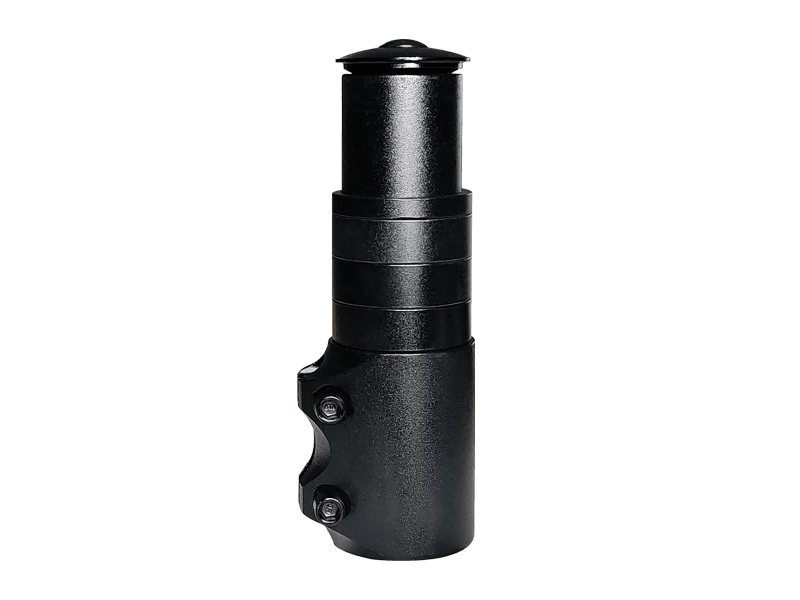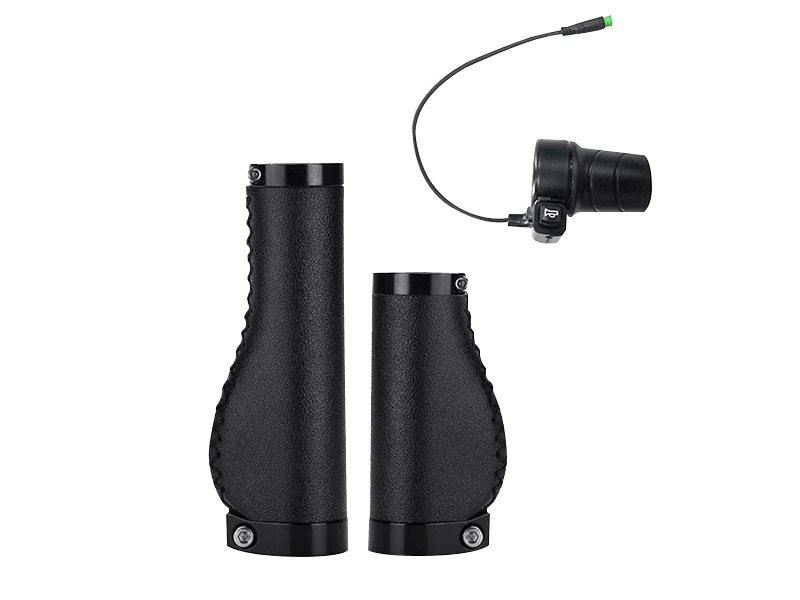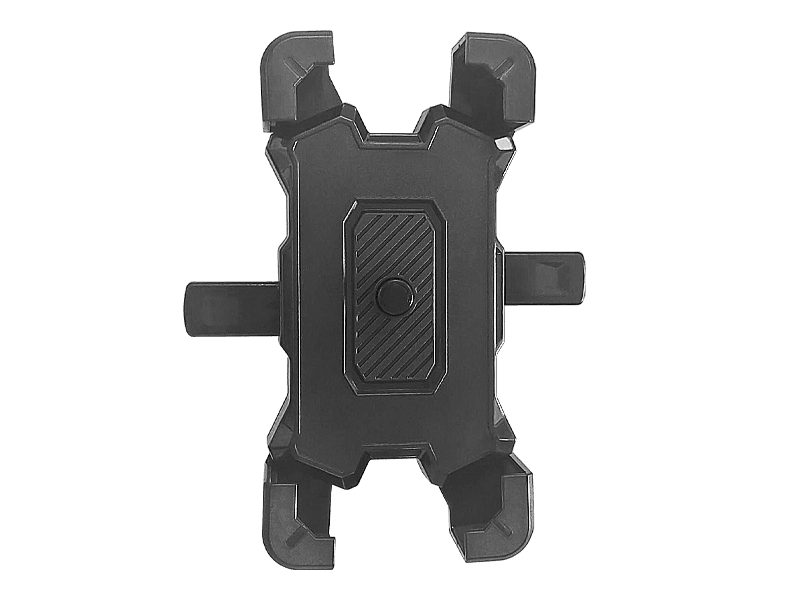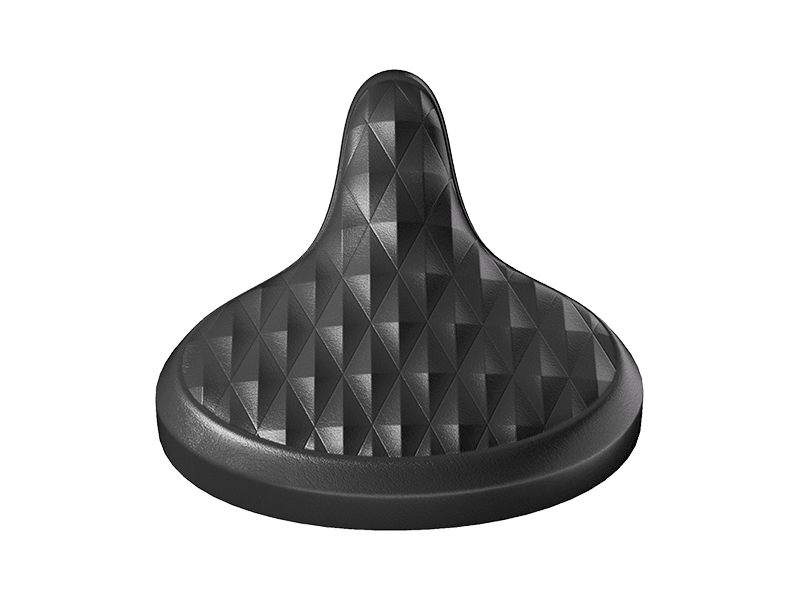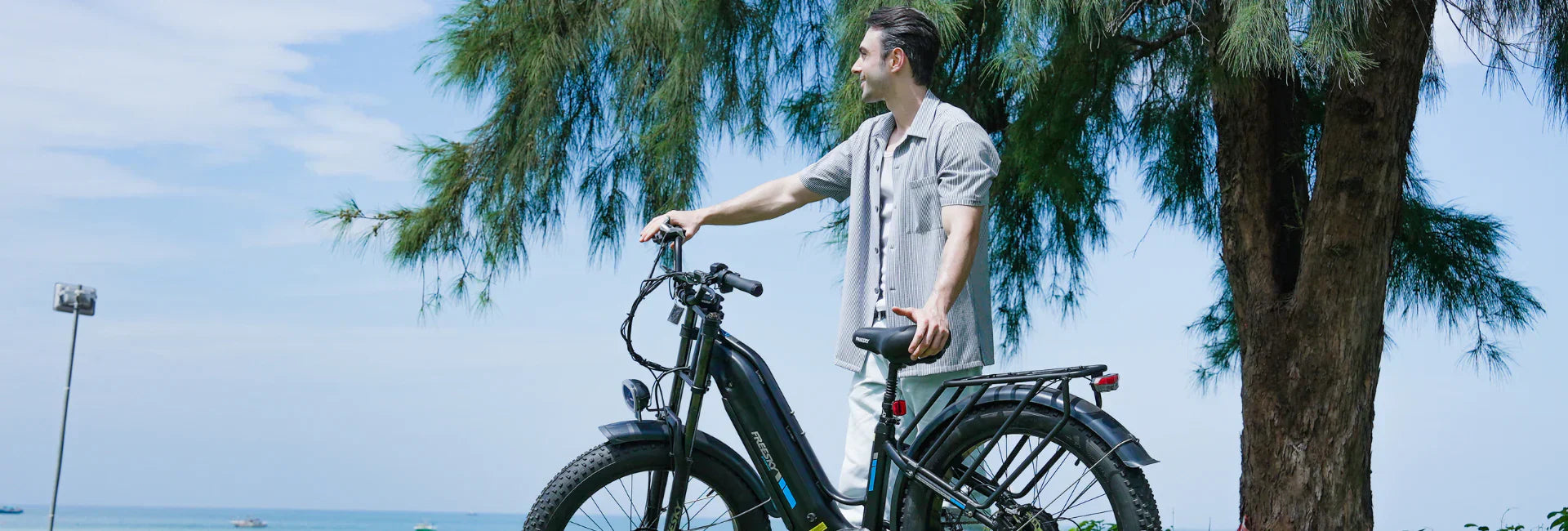5 modi rapidi per mantenere stretto e sicuro il telaio della bici elettrica
AUG 01, 2025
Spesso inizia con un piccolo scricchiolio. Poi un leggero oscillare mentre si pedala su ciottoli o superfici stradali sconnesse. Non te lo stai immaginando: il telaio della tua bici elettrica potrebbe effettivamente allentarsi con il tempo.
La buona notizia è che nella maggior parte dei casi, il problema può essere risolto con semplici controlli e regolazioni che puoi effettuare autonomamente. Mantenendo il telaio in posizione, non solo migliori il comfort di guida, ma garantisci anche la sicurezza in ogni viaggio.
Come riconoscere l'allentamento del telaio
-
Rumori scricchiolanti: Rumori metallici di sfregamento o clic durante l'accelerazione, la salita o le curve.
-
Sensazione di guida instabile: Sensazione di morbidezza o di spostamento quando si attraversano dossi o superfici ruvide.
-
Cerniere o connettori allentati: Gioco evidente nei meccanismi di piegatura o nei giunti del telaio.
-
Disallineamento delle ruote: Se le ruote anteriore e posteriore non sono allineate correttamente quando si solleva la bicicletta, il telaio potrebbe attorcigliarsi o deformarsi.
Cinque controlli per mantenere solida la tua struttura
1. Serie sterzo e attacco manubrio
Se il manubrio sembra instabile o scatta in curva, la serie sterzo o l'attacco manubrio potrebbero essere allentati.
Cosa fare:
-
Tieni saldamente la ruota anteriore tra le gambe.
-
Girare il manubrio: se si muove in modo indipendente, stringere i bulloni con una chiave esagonale.
-
Stringere solo fino a quando non è ben saldo, evitando di esercitare una forza eccessiva.
2. Morsetto reggisella
Un reggisella che scivola può creare movimento nella parte posteriore del telaio.
Cosa fare:
-
Allentare il morsetto, regolare l'altezza della sella, quindi serrare nuovamente.
-
Per un serraggio preciso, utilizzare una chiave dinamometrica, se disponibile.
-
Applicare pasta al carbonio (per perni in carbonio) o grasso (per perni in lega) per ridurre al minimo lo scivolamento.
3. Guarnitura e movimento centrale
Gli scricchiolii durante la pedalata spesso indicano la presenza di gioco tra le pedivelle o il movimento centrale.
Cosa fare:
-
Verificare il movimento laterale di ogni braccio della pedivella.
-
Stringere i bulloni della manovella con l'attrezzo corretto.
-
Se il movimento centrale è allentato o usurato, rivolgersi a un'officina professionale per la manutenzione o la sostituzione.
4. Giunti pieghevoli (per bici elettriche pieghevoli)
Cerniere e chiusure pieghevoli sono sottoposte a sollecitazioni costanti. Anche piccole fessure possono causare instabilità.
Cosa fare:
-
Aprire completamente la bicicletta e fissarla.
-
Controllare il movimento della cerniera e serrare nuovamente i bulloni.
-
Lubrificare dove necessario.
⚠️ Se il giunto non può essere serrato in modo sicuro, contattare il fornitore di servizi prima di riprendere a pedalare.
5. Triangolo posteriore e area dell'assale
La parte posteriore è fondamentale per la stabilità.
Cosa fare:
-
Verificare che i dadi degli assi o le leve a sgancio rapido siano serrati correttamente.
-
Ispezionare le saldature per individuare eventuali crepe o segni di stress.
-
Controllare che il forcellino del deragliatore e i supporti dei freni siano fissati correttamente.
Perché è importante
Una postura scorretta non è solo scomoda. Se trascurata, può portare a:
-
Maggiore usura dei componenti.
-
Affaticamento e crepe del telaio.
-
In rari casi, improvviso cedimento strutturale.
Il telaio della tua e-bike è la sua base. Controlli regolari sono importanti tanto quanto il monitoraggio degli pneumatici e del livello della batteria.
Come prevenire l'allentamento del telaio
-
Ispezione mensile: Controllare la serie sterzo, il reggisella, la guarnitura e i giunti.
-
Cura extra dopo la pioggia o la pulizia: L'umidità può accelerare la corrosione e l'allentamento.
-
Utilizzare gli strumenti corretti: Investi in un set di chiavi esagonali e una chiave dinamometrica. Si consiglia una manutenzione professionale per chi guida regolarmente.
Costruito per la stabilità a lungo termine
I telai di alta qualità sono progettati per resistere a flessioni e vibrazioni, garantendo un'affidabilità duratura. Le e-bike Freesky sono progettate tenendo presente questo principio: strutture rinforzate e una produzione di precisione contribuiscono a mantenere l'integrità del telaio anche in condizioni di guida impegnative.
Considerazioni finali
Una guida stabile inizia con un telaio sicuro. Eseguendo questi cinque semplici controlli, puoi mantenere la tua bici elettrica sicura, reattiva e piacevole da guidare.
Guida in sicurezza. Guida con fiducia.
FAQ: Allentamento del telaio
1. Tutti gli scricchiolii indicano che il telaio è allentato?
Non sempre. Alcuni rumori provengono dalla sella, dai pedali o dai freni. Ma serie sterzo, guarnitura o giunti pieghevoli sono le prime aree da ispezionare.
2. È sicuro pedalare se il telaio sembra instabile?
Non è consigliabile. Anche brevi tragitti possono causare ulteriori danni o rischi per la sicurezza.
3. Le biciclette pieghevoli sono più colpite?
Sì. Le cerniere e i fermi pieghevoli richiedono controlli più frequenti a causa della loro progettazione.
4. Con quale frequenza dovrei controllare il telaio?
Si consiglia di farlo una volta al mese. Più spesso se si pedala quotidianamente o su terreni accidentati.
5. Quanto devono essere stretti i bulloni?
Stringere bene, ma non eccessivamente. L'uso di un utensile con coppia limitata è l'opzione più sicura.


